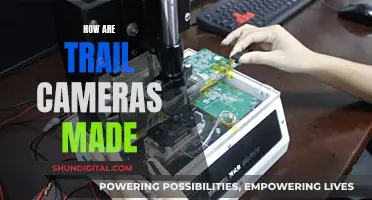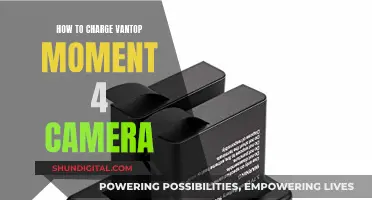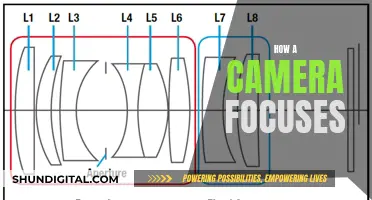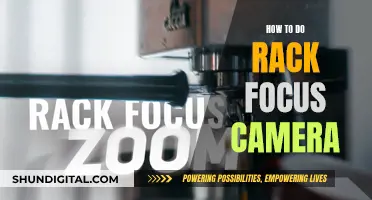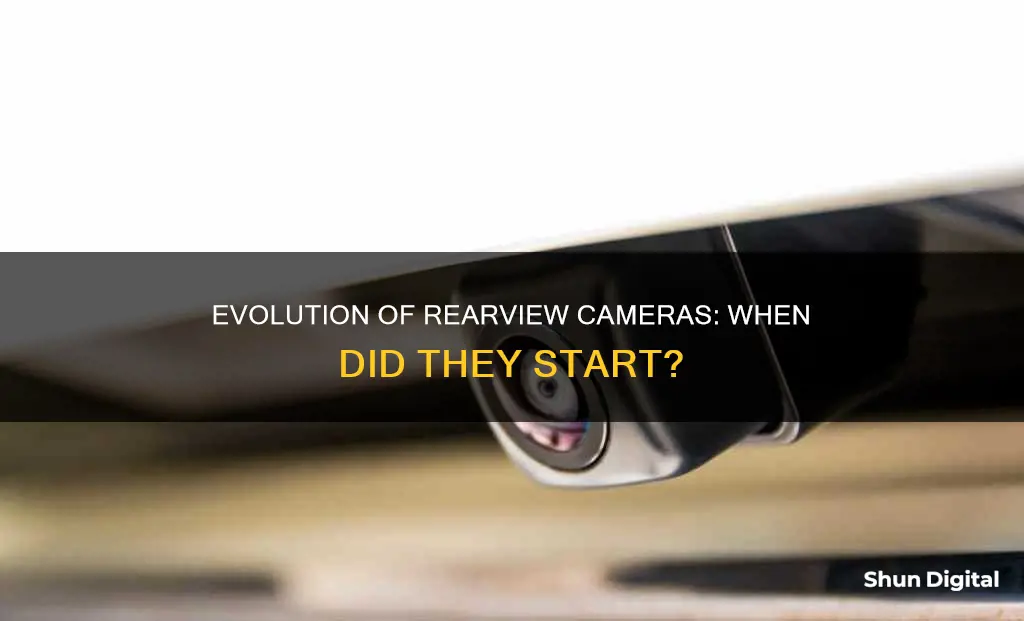
Since May 1, 2018, all cars and light trucks manufactured for sale in the US have been required by law to have backup cameras. This was implemented by the National Highway Traffic Safety Administration (NHTSA) to prevent accidents, especially those involving pedestrians, including many children, due to drivers' limited rear visibility. While the technology has been available for decades, with the 1956 Buick Centurion concept car being the first to feature a reverse camera, it is only in recent years that backup cameras have become standard in vehicles.
| Characteristics | Values |
|---|---|
| Year rearview cameras became mandatory in the US | 2018 |
| Year the first rearview camera was made | 1956 |
| Make and model of the first car with a rearview camera | Buick Centurion |
| Year a production car came equipped with a rearview camera | 1991 |
| Make and model of the first production car with a rearview camera | Toyota Soarer coupe |
| Year a car with a rearview camera was available in the US | 2002 |
| Make and model of the first car with a rearview camera in the US | Infiniti Q45 sedan |
What You'll Learn
- The 1956 Buick Centurion was the first car with a rearview camera
- Since 2018, rearview cameras have been mandatory in the US and Canada
- Rearview cameras reduce the blind spot, which is a killing zone
- Backup cameras can be added to older vehicles as an aftermarket addition
- The combination of a rearview camera, parking sensors, and automatic rear braking reduces the backup collision rate by 78%

The 1956 Buick Centurion was the first car with a rearview camera
The 1956 Buick Centurion was a concept car that debuted at the 1956 General Motors Motorama in January 1956. It was a shapely, innovative vehicle with a distinctive design. Notably, it was the first car to feature a rearview camera, allowing the driver to see behind the car without turning around. This groundbreaking system, designed by auto designer Chuck Jordan, consisted of a television camera mounted on the V-shaped trunk and a small TV screen on the sleek dashboard. The Centurion's designers were so confident in this technology that they omitted mirrors entirely.
While the rearview camera in the Buick Centurion was a pioneering concept, it did not immediately catch on. One possible reason was the challenge of connecting the camera to the TV, which would have required messy cabling throughout the car, taking up significant space. Despite this, the Centurion's rearview camera was a remarkable innovation for its time, showcasing Buick's forward-thinking approach to automotive design.
It is worth noting that the Centurion also boasted the largest fully transparent bubble roof seen up to that point, providing an unobstructed view all around. This feature, along with its aviation-inspired interior cues and bucket seats, made the Centurion a truly unique concept car. The vehicle's design inspired many GM cars launched in the late 1950s, and some of its elements, such as the wing-type fenders and two-tone paint, found their way into production models from Chevrolet and Buick.
The Buick Centurion's rearview camera was a precursor to the technology we see in modern cars. While the system was bulkier and more conspicuous than today's cameras, it laid the groundwork for future developments. It would be another 35 years before the first production model with a backup camera was released, the 1991 Toyota Soarer coupe, which was initially only available in the Japanese market.
In conclusion, the 1956 Buick Centurion holds a significant place in automotive history as the first car to introduce the rearview camera. This innovative feature, along with its other forward-thinking design elements, showcases the Centurion's impact on the evolution of automotive technology and design.
Clear Adobe Camera Raw Cache: A Step-by-Step Guide
You may want to see also

Since 2018, rearview cameras have been mandatory in the US and Canada
Since 1 May 2018, all new cars sold in the US have been required to have rearview cameras, also known as backup cameras, installed as standard. This applies to all vehicles manufactured for sale in the US, including the least expensive and simplest cars. The mandate was issued by the National Highway Traffic Safety Administration (NHTSA) in 2014, following a 2008 bill known as the Cameron Gulbransen Kids Transportation Safety Act.
The rearview camera requirement was first introduced in the 1956 Buick Centurion concept car, which featured a rear-mounted camera that sent images to a dashboard screen. However, it was not until over 60 years later that rearview cameras became mandatory in the US. The delay in implementation was due to several factors, including the need to analyse the costs and benefits of the requirement and the time required for manufacturers to implement the technology.
The NHTSA mandate was driven by safety concerns, as thousands of people, especially children, were injured or killed each year due to "backover" crashes. According to the Department of Transportation, more than 200 people are killed and over 12,000 are injured annually in such accidents. Rearview cameras are designed to reduce the rear blind spot, often described as a "killing zone", and enhance the driver's visibility while reversing.
Prior to the mandate, some manufacturers had already started including rearview cameras as standard or optional equipment. By the 2015 model year, Acura, Buick, Honda, and Infiniti vehicles came standard with rearview cameras. Other manufacturers, including Ford, Nissan, and Toyota, followed suit before the 2018 federal requirement.
In Canada, a similar mandate was issued by Transport Canada, requiring all new vehicles sold in the country to be equipped with backup cameras starting from the same date as the US mandate. This move towards standardised safety features in North America highlights the importance of ensuring driver safety and preventing accidents, especially those involving vulnerable road users such as children.
iPhone XS Max: Night Mode Camera Feature Explained
You may want to see also

Rearview cameras reduce the blind spot, which is a killing zone
Rearview cameras have been standard in all cars and light trucks manufactured for sale in the US since May 1, 2018. This was due to a federal requirement, though many cars were equipped with cameras as either standard or optional equipment before this date. The National Highway Traffic Safety Administration (NHTSA) mandated this requirement in 2014, citing the potential to save lives. According to the NHTSA, more than 200 people are killed annually in accidents where the driver is backing up and cannot see behind the vehicle.
The rearview camera is an effective tool in reducing blind spots, which are a significant cause of accidents and fatalities. Blind spots cover close to half of the space around a vehicle, and accidents can occur when drivers pull out of a parking spot or change lanes without seeing oncoming vehicles or pedestrians in their path. Rearview cameras, also called backup or reverse cameras, provide a view of the area behind the car without the driver having to physically turn around and look backward. This technology was first introduced in the 1956 Buick Centurion concept car, which featured a rear-mounted camera that sent images to a dashboard screen.
While rearview cameras are an important safety feature, they should not be solely relied upon by drivers. Advanced Driver-Assistance Systems (ADAS) provide an additional layer of safety, but drivers should also use their own observations and properly adjust their mirrors to minimize blind spots. It is recommended to use all three mirrors (inside rearview, outside driver-side, and passenger-side) while driving and to properly adjust them to create a seamless visual view around the vehicle, especially to the rear.
In addition to rearview cameras, other safety features can assist drivers when backing up, such as rear parking sensors, rear cross-traffic alert, and automatic rear braking. Combining a camera with these additional features has been shown to further reduce collision rates. For example, a 2019 study by the Insurance Institute for Highway Safety (IIHS) found that while rear cameras alone reduced collision rates by 5%, adding rear parking sensors reduced the backup collision rate by 42%, and including automatic rear braking lowered the collision rate by 78%.
In conclusion, rearview cameras are an effective tool in reducing blind spots, which can be a "killing zone" for pedestrians and other road users. However, it is important for drivers to remain vigilant and utilize all available safety features and driving techniques to minimize the risk of accidents and fatalities.
Mastering Park Camera Mode: Understanding the Boxes
You may want to see also

Backup cameras can be added to older vehicles as an aftermarket addition
Since May 1, 2018, all cars and light trucks manufactured for sale in the US have been required to include backup cameras. This federal requirement was issued by the National Highway Traffic Safety Administration (NHTSA) to prevent accidents and save lives. However, if you own an older vehicle that doesn't have a built-in backup camera, you can still add one as an aftermarket addition.
There are a few different types of backup camera systems available on the market, and the cost of adding a backup camera to your car will depend on the type of camera and monitor you choose. If your vehicle already has an infotainment screen, you can opt for a wired backup camera that integrates with the existing screen or displays the camera's image in the rearview mirror. These systems typically cost around $200 to $500. Another option is a hard-wired or wireless backup camera with a separate monitor, which can be a more affordable choice for older vehicles without an infotainment screen. These systems can cost as little as $100 to $200.
When choosing a backup camera system, consider the ease of installation. Wireless cameras are generally simpler to install since they don't require drilling holes or splicing wires. However, hardwired systems often offer sharper image quality. Additionally, consider whether you want the image to display on the infotainment screen, rearview mirror, or a standalone screen. Some internal monitors clip onto the existing rearview mirror, while others replace it entirely.
To install a backup camera, you will need to remove the rear license plate and interior trunk panel to access the wiring. You will also need to drill a small hole to run the camera's power and video cable into the trunk. The camera can then be mounted onto or behind the license plate, and the wires can be connected to the reverse light wires. Finally, the monitor can be attached to the windshield or rearview mirror, and the camera's video cable can be routed to the front of the car and connected to the monitor.
While adding a backup camera to an older vehicle may require some time and effort, it can significantly enhance safety and prevent accidents. It is important to carefully follow the installation instructions and consider seeking professional assistance if needed.
Materials Used to Make Camera Mounts
You may want to see also

The combination of a rearview camera, parking sensors, and automatic rear braking reduces the backup collision rate by 78%
Rearview cameras have been around for decades, with the first car to feature one being the 1956 Buick Centurion concept car. However, it was not until 2018 that these cameras became mandatory in all cars and light trucks manufactured for sale in the US. This was due to a federal requirement, implemented by the National Highway Traffic Safety Administration (NHTSA), following years of delays.
The NHTSA pushed for this mandate due to safety concerns. According to the organisation, thousands of pedestrians were injured and more than 200 were killed annually in accidents where drivers, who were backing up, couldn't see the pedestrian. This included many small children.
While rearview cameras alone can help prevent such accidents, their effectiveness is limited by drivers who don't respond to the warnings or look at the screen when backing up. This is where parking sensors and automatic rear braking come in.
Parking sensors issue warnings when a vehicle gets too close to another object. These warnings usually increase in frequency as the vehicle gets closer. When combined with a rearview camera, parking sensors can reduce backing crash-involvement rates by 42%.
Automatic rear braking takes this a step further by applying the brakes to avoid a collision when a vehicle backs up. This technology does not rely on drivers taking action to avoid a crash. When combined with a rearview camera and parking sensors, automatic rear braking systems can lower the collision rate by 78%.
In conclusion, while rearview cameras are an important safety feature, their effectiveness is greatly enhanced when combined with parking sensors and automatic rear braking systems. This combination can significantly reduce the number of backup collisions, making our roads much safer.
Charging Your Link-S LTE Camera: A Quick Guide
You may want to see also
Frequently asked questions
1 May 2018.
Since 1 May 2018.
The 1956 Buick Centurion concept car.
The 1991 Toyota Soarer Limited, which was only available in Japan.
Infiniti, on the 2002 Q45 sedan.


